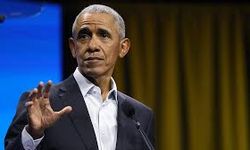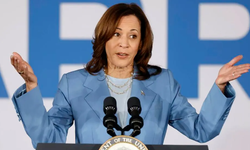As in the 2020 critical elections, the winner of the race, which is expected to pit Biden and Trump against each other, will be sworn in on January 20, 2025 and become the 47th president of the United States.
On November 5, in the Congressional elections to be held together with the presidential elections, one third of the 100-member Senate and the entire 435-member House of Representatives will be changed.
HOW THE PRESIDENTIAL ELECTION CALENDAR WORKS
Beginning on January 15th in Iowa, the primary process will conclude with the final primaries on June 8th, where people in all 50 states and the 50 contiguous territories will choose between the Democratic and Republican Party candidates.In some states, both the Democratic Party and the Republican Party will hold primaries on the same day, while in others the two parties will hold primaries at different times.
While many states use the so-called "primary" system, in which voters traditionally go to the polls and cast their ballots, some states prefer the caucus system.
While presidential elections in the US traditionally start in Iowa, voters in New Hampshire on January 23, South Carolina on February 3, Nevada on February 6, South Carolina on February 24, Michigan on February 27, Idaho and Missouri on March 2, Washington DC (Republicans) on March 3, and North Dakota on March 4 will vote in their party's primaries.
On March 5, "Super Tuesday", one of the most critical days of the presidential race, primaries will be held in Alabama, Alaska, American Samoa, Arkansas, California, Colorado, Iowa, Maine, Massachusetts, Minnesota, North Carolina, Oklahoma, Tennessee, Texas, Utah, Vermont and Virginia.
In 16 states, voters will choose between candidates on Super Tuesday, and the candidates who emerge victorious on Super Tuesday are significantly more likely to outpace their rivals in the race.
The primary process will continue with elections in Georgia, Hawaii, Mississippi, Washington and the Northern Mariana Islands on March 12, Guam on March 16, and the critical states of Arizona, Florida, Illinois, Kansas and Ohio on March 19.
The March 23 primaries in Louisiana and Missouri will be followed by the North Dakota primary on March 30.
The primaries in Connecticut, Delaware, New York, Rhode Island and Wisconsin will be held on April 2, and voters in Alaska, Hawaii and North Dakota will make their choices on April 6.
Democrats will hold their primaries in Wyoming on April 13, Republicans on April 18, Republicans in Puerto Rico on April 21 and Republicans on April 28. On April 23, Pennsylvania, one of the critical states, will hold its primaries.
In May, primaries will be held in Indiana on the 7th, Maryland, Nebraska and West Virginia on the 14th, and Kentucky and Oregon on the 21st.
On June 4, voters in Montana, New Jersey, New Mexico, South Dakota and the capital Washington DC (Democrats) will choose between candidates.
The US primary process will end with primaries in Guam and the Virgin Islands on June 8.
PARTY CONGRESSES IN JULY AND AUGUST
During the primary election process, which will conclude in June, party delegates from each state vote for candidates at the party conventions, making them the official nominee of that party.
This year, the Republican Party will officially nominate its presidential candidate at its party convention in Milwaukee on July 15-18, while the Democratic Party will announce its presidential candidate at its party convention in Illinois on August 19-22.
Live television broadcasts pitting the Democratic presidential nominee against the Republican presidential nominee will take place on September 16, October 1 and October 9.
WHAT IS THE "ELECTORAL COLLEGE" SYSTEM
The American electoral system is based on a structure in which the candidate with the most delegates wins the presidency, not the candidate with the most votes.
In this system, called the "Electoral College" in the US and enshrined in the country's constitution, there are a total of 538 delegates distributed to each state with different weights, and the candidate who reaches one more than half of this number, i.e. 270 delegates, is eligible to become president.
In this system, voters do not actually vote directly for the presidential candidate, but for the members of the state's Electoral College. Their job is to elect the president and vice-president of the United States.
Every four years, the Electoral College meets a few weeks after the elections to fulfill this task. The Electoral College, which will take shape after this year's presidential elections, will meet in the capital Washington on December 17 to formally elect the president and vice president.
The number of delegates in each state's Electoral College is determined by the state's population. Each state has as many delegates as the total number of members in the Senate (100) and the House of Representatives (435), the two houses of the US Congress. In addition, the capital Washington, which has no representatives in Congress, has 3 members in the Electoral College.
California, for example, is the state with the most members in the Electoral College with 54 delegates, while Texas has 40, Florida 30, New York 28, Illinois and Pennsylvania 19 each.
The redistributed delegate counts based on the general vote count in 2020 are projected to allow Republicans to win 3 more delegates compared to the previous delegate allocation.
In most states, the candidate who wins a majority in that state is eligible to receive the votes of all delegates in that state. For example, in Texas, even if a candidate wins 50.1 percent of the vote, he or she gets all 40 delegates.
Many states in the country are traditionally Republican- or Democrat-majority, and in these states the candidates are a lock, but states that lean toward different party candidates in different elections are called "swing states" or "swing states" and essentially decide the fate of the election.
For the 2024 elections, North Carolina, Georgia, Pennsylvania, Wisconsin, Arizona and Michigan are expected to play an important role in determining the fate of the election as swing states.
On the other hand, it is commented that the Muslim American population, especially concentrated in Michigan, may not vote for Biden due to his stance on Gaza, which will affect the election result in the critical state.















